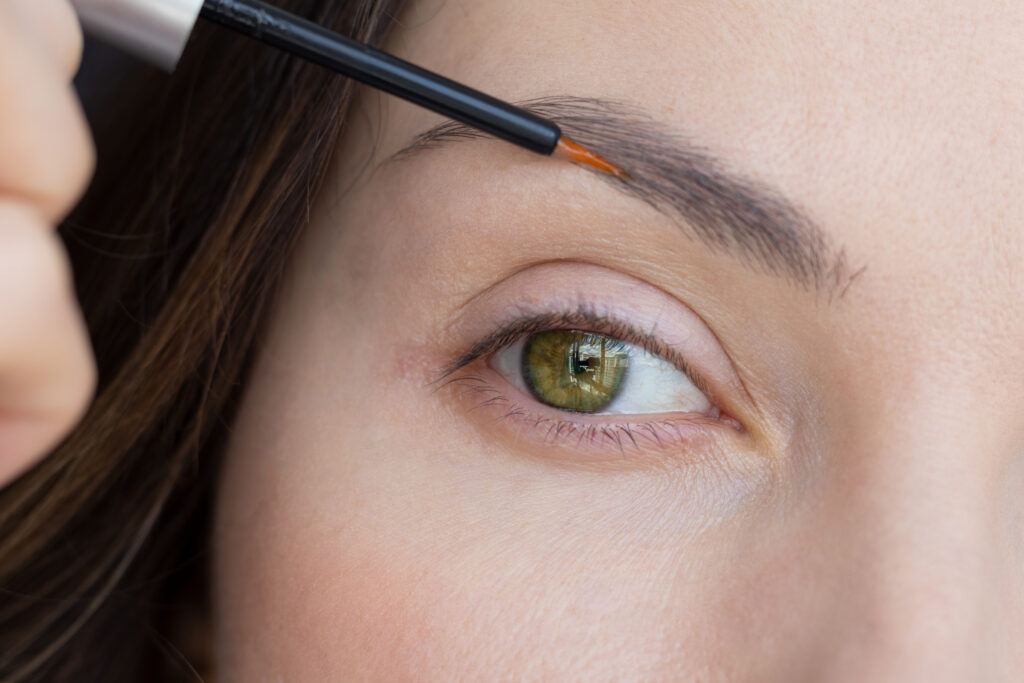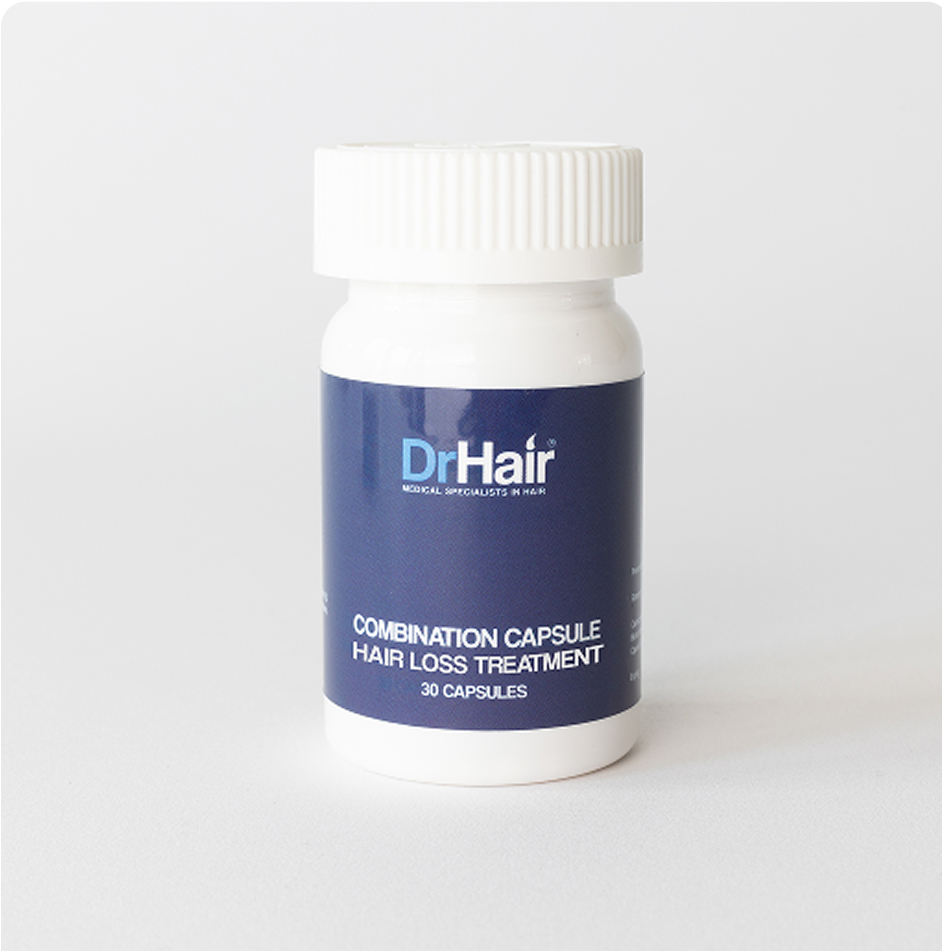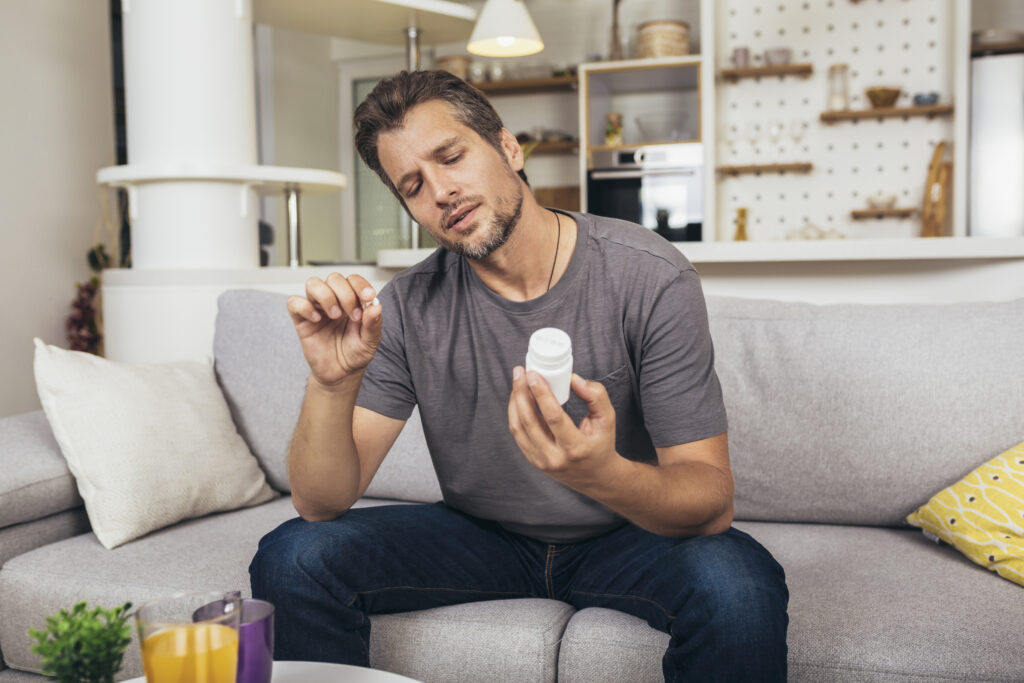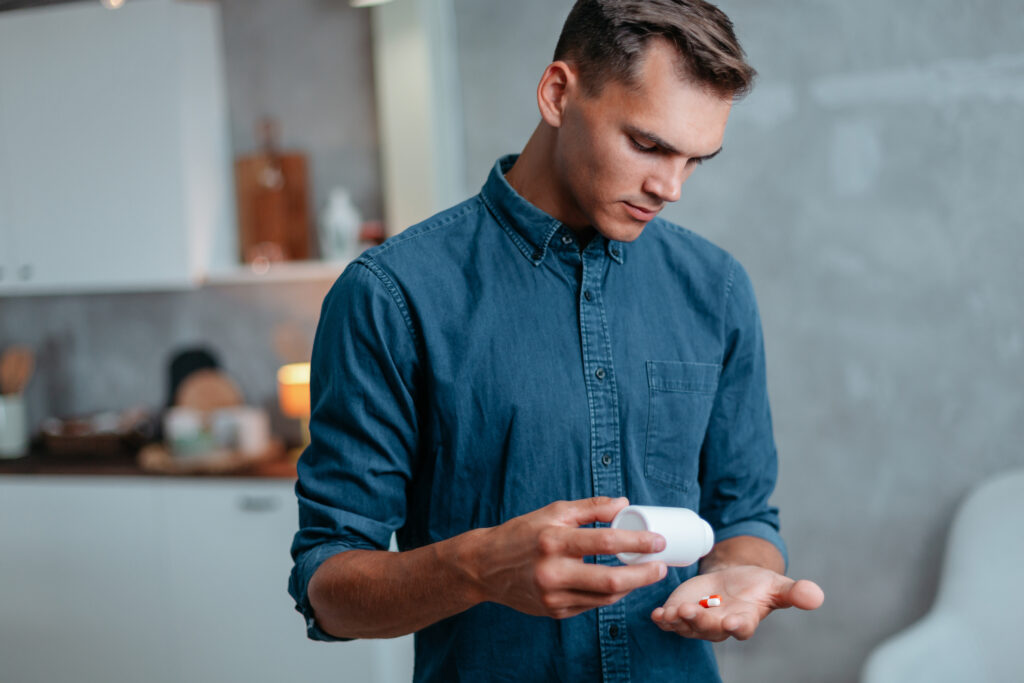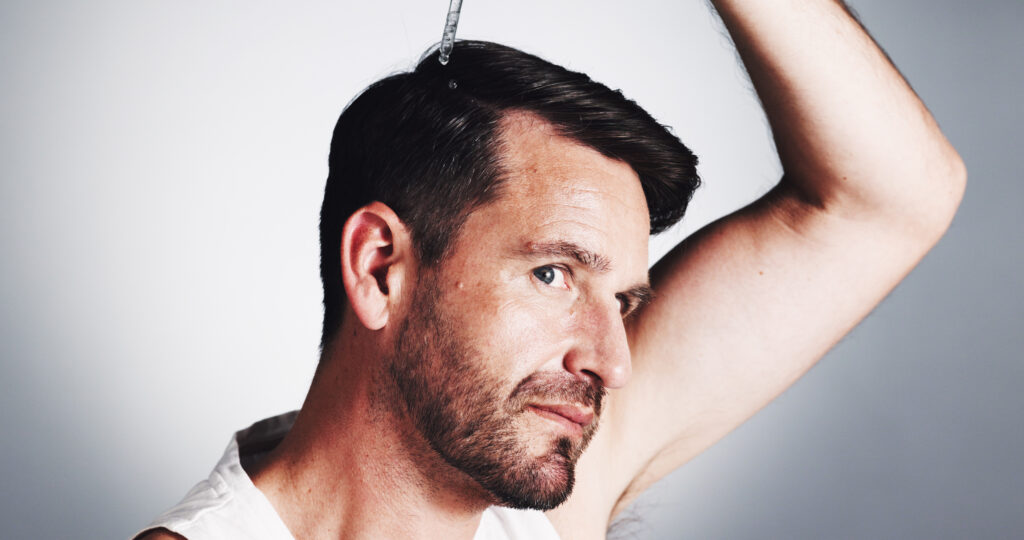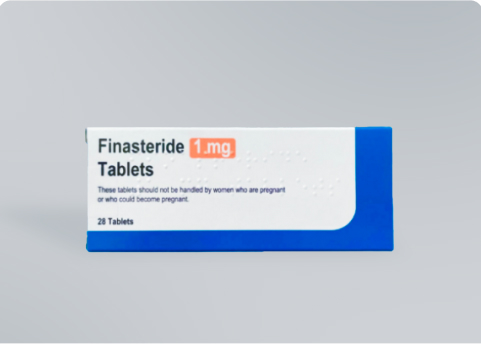Our eyebrows frame our facial features, facilitate expression and are an important part of our overall appearance. Studies show that losing them can cause anxiety and self-esteem issues [1]. Fortunately, there are ways to help them grow back.
Research shows that using minoxidil for eyebrow hair loss is safe and effective and can help achieve regrowth within a few months [2][3]. This article will tell you all you need to know about minoxidil eyebrow treatment, including:
- What minoxidil is and how it can support eyebrow regrowth
- How to safely use minoxidil on your eyebrows
- Risks and side effects of using minoxidil for eyebrow loss
- Alternatives to minoxidil for eyebrow regrowth
Table of Contents
- What is minoxidil?
- Can you use minoxidil for eyebrow hair growth?
- How does minoxidil work on eyebrows?
- When can you see minoxidil results on your eyebrows?
- How to apply minoxidil to your eyebrows
- Tips for safe minoxidil eyebrow use
- What are the side effects of minoxidil for eyebrows?
- What can cause eyebrow hair loss?
- Which eyebrow loss conditions can minoxidil treat?
- Alternatives to minoxidil for eyebrow growth
- Get the best minoxidil for thinning hair
- Frequently asked questions
What is minoxidil?
Minoxidil is a medication originally developed for high blood pressure. However, scientists soon noticed that patients who were taking it were also experiencing improved hair density and diminished alopecia symptoms. In 1988, it was approved by the FDA (and subsequently, the MHRA) to treat hair loss caused by androgenetic alopecia [4].
Nowadays, minoxidil is one of the most widely used hair growth medications, alongside finasteride. It is best known under the brand name Rogaine but can be found in many formulations produced by different companies.
People most frequently opt to use topical minoxidil 2% or 5% for hair loss. It can be found as a solution, foam, gel or spray. However, some opt for low-dose oral minoxidil tablets. While both the pills and the topical solution are equally effective for hair loss, the oral treatment can have more systemic side effects as it travels through your bloodstream to reach your scalp [4].
![Before and after minoxidil for eyebrows Patient’s eyebrows before (a, c) and after (b,d) 16 weeks of minoxidil 2% treatment (Zaky et al, 2023)[Source & image credit: 7]](https://drhair.co.uk/wp-content/uploads/2025/04/Before-and-after-minoxidil-for-eyebrows.webp)
Can you use minoxidil for eyebrow hair growth?
Yes, you can safely and effectively use minoxidil to stimulate your eyebrow growth. Research shows that using this medication consistently can improve eyebrow hair count, density and thickness [2][3][5][6].
One study [3] performed in 2019 on 39 patients with eyebrow hair thinning (hypotrichosis) involved 16 weeks of treatment with minoxidil 2% applied twice a day. After 4 months, an overall increase in eyebrow enhancement was observed in 66.6% of the patients. Eyebrow diameter and hair count were also improved. Similar results were also reported by a different 2019 trial [5] performed on 22 patients treated with minoxidil 2% for 16 weeks.
Another research [6] performed in 2017 on 40 patients with eyebrow loss treated twice a day with 1% minoxidil lotion for 16 weeks supported these findings. Starting at the 8-week mark, some improvement could be seen in eyebrow diameter, count and global photographic assessment. This improvement became significant by the end of treatment.
Moreover, one trial found that minoxidil was as effective as Bimatoprost [7], a medication for pressure in the eye, for tackling eyebrow loss [8] [9]. This medication may also improve eyebrow growth in patients with frontal fibrosing alopecia (a form of scarring alopecia), though further research is needed [10].
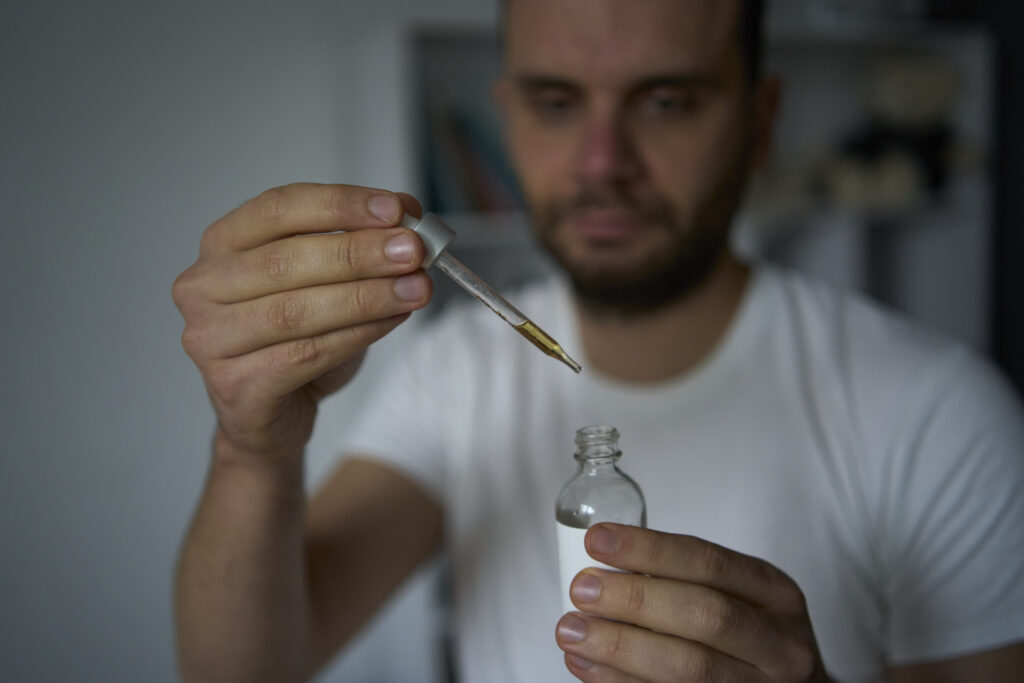
How does minoxidil work on eyebrows?
Minoxidil works on eyebrows the same way it does on scalp hair. It dilates the small blood vessels that nourish the hair follicles, allowing more oxygen and nutrients to reach them [11]. These additional resources help regulate the hair growth cycle and produce thicker, healthier eyebrow hair.
When can you see minoxidil results on your eyebrows?
It normally doesn’t take long for minoxidil to work. You should be able to see the first signs of eyebrow growth in 1-2 months of consistent treatment. However, it can take 3-6 months to achieve your full results (for some patients, it can take even longer).
If you have been using minoxidil for over 6 months with no improvement, it is a good idea to be assessed by a trichologist, as you may need a different treatment.
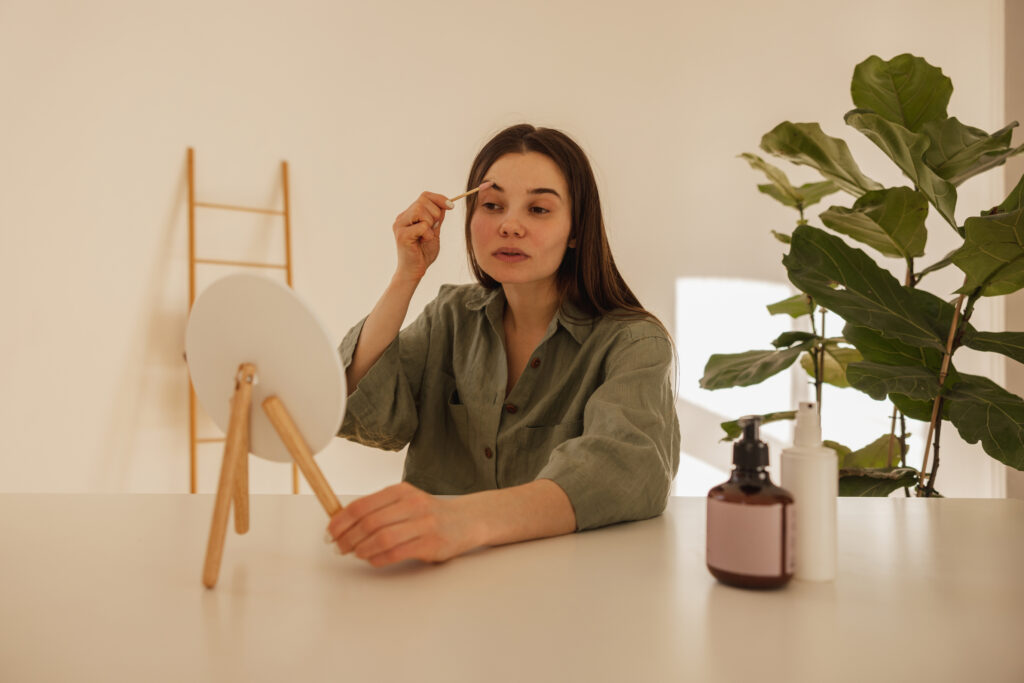
How to apply minoxidil to your eyebrows
It is easy to apply topical minoxidil to your eyebrows as long as you are careful not to get any solution in your eyes. All you have to do is to follow these simple steps:
- Clean your eyebrow area and pat it dry with a soft towel
- If you are using a minoxidil solution, dip a clean eyeliner or mascara brush into the bottle and use it to gently spread the solution across the sparser areas of your eyebrow
- If you are using a minoxidil foam or gel, shake the container well and dispense a pea-sized glob on your fingertip. Spread it evenly across the thinning areas of your eyebrows
- Gently massage the area to improve absorption
- Let the minoxidil sit for at least 2 hours before washing it off or applying any cosmetic products to your eyebrows
If you are wondering how often you should apply topical minoxidil on your eyebrows, it is advised to do so twice a day unless your trichologist recommends otherwise.
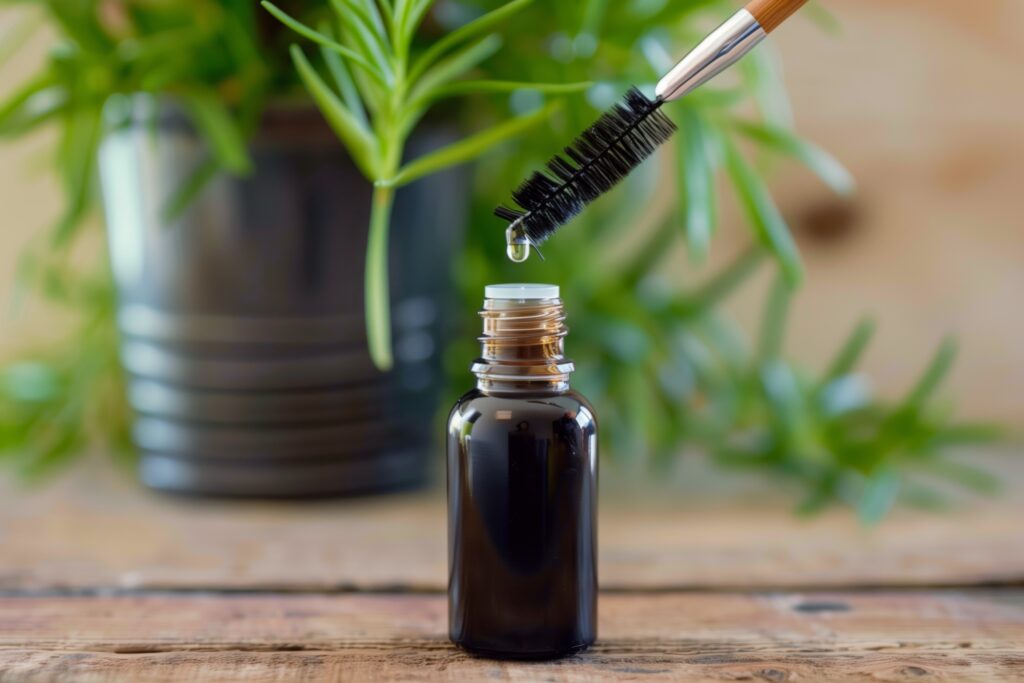
Tips for safe minoxidil eyebrow use
Here is how you can minimise the risk of minoxidil getting into your eyes or on other parts of your face while applying it:
- Never apply the medication on wet eyebrows – the water can make it drip into your eyes or down your face.
- Use a bit of petroleum jelly above and below your eyebrows before applying the minoxidil to prevent accidental contamination beyond their outer edges.
- Avoid using the dropper supplied with the minoxidil solution to apply it to your eyebrows, as it can cause dripping.
- Never use minoxidil spray on your eyebrows, as it is too difficult to control where the aerosol will land.
- Wash your hands thoroughly after applying the minoxidil before accidentally touching other areas of your face.
- Test the minoxidil on a small patch of skin before applying it to your eyebrows. If you experience redness, itching, swelling, or a rash, you may be allergic to it.
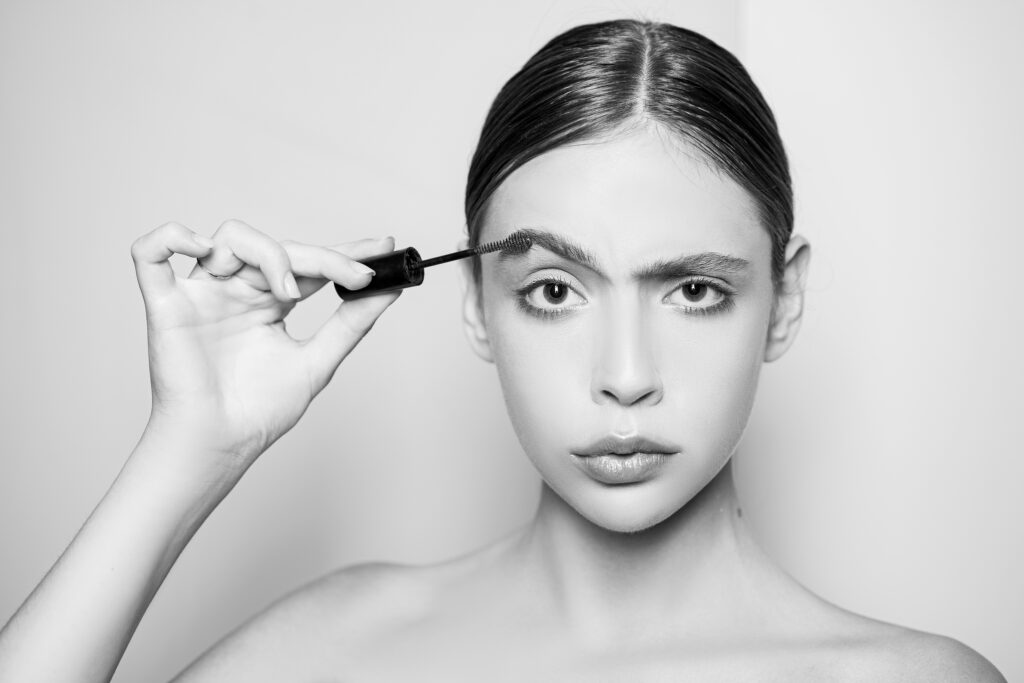
What are the side effects of minoxidil for eyebrows?
Minoxidil is considered very safe and has few serious potential side effects. When it comes to eyebrow use, the most common adverse reactions recorded in relevant literature so far are mild itching and burning at the application site [5][6].
Other minoxidil side effects may also sometimes cause temporary redness, skin dryness or irritation and unwanted hair growth (hypertrichosis) [4]. And in those allergic to it, it can also trigger contact dermatitis (often presenting as a minoxidil rash).
If you experience minoxidil side effects, wash the affected area well with warm water and a bit of gentle soap. Some minoxidil redness or itching is normal and should subside with continued use. However, if the effects are severe or persist with every use, you may be allergic and need to use an alternative treatment.
Should minoxidil drip into your eyes, rinse them out with copious amounts of cool water until the discomfort starts to subside. If the irritation persists or worsens, see your healthcare provider.
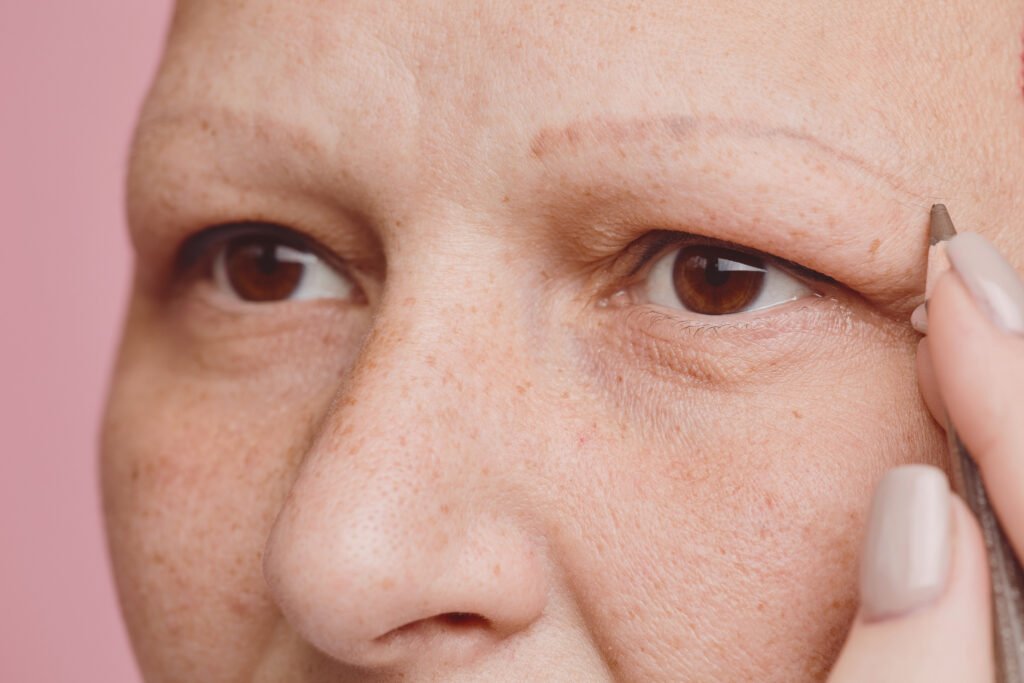
What can cause eyebrow hair loss?
Several conditions and lifestyle factors can make your eyebrows fall out, grow sparser or develop bald spots. Here are some of the most common [2][7][12]:
- Ageing and hormonal changes: Eyebrows start to naturally grow thinner and sparser in some people as they age as a result of changes to their hormonal balance [13].
- Alopecia areata: This autoimmune condition that normally causes smooth bald spots on the scalp can sometimes extend to the eyebrows, resulting in hairless patches.
- Certain skin conditions: Dermatological conditions which manifest with inflammation, such as eczema, psoriasis or seborrheic dermatitis, can sometimes cause eyebrow hair loss (madarosis).
- Thyroid disorders: If your thyroid is underactive, it can cause the loss of the outer corner of the eyebrow (a distinctive symptom in some patients).
- Overplucking your eyebrows: Repeatedly pulling out your eyebrows from their roots can damage the hair follicles and prevent them from growing back. This can happen during aggressive cosmetic plucking, or it can be caused by a psychological disorder called trichotillomania (compulsive hair plucking from the scalp, beard or eyebrows).
- Medication side effects: Chemotherapy is the main cause of medication-induced eyebrow loss, but it can also occur as a side effect of certain anticonvulsants (such as valproic acid) or dermatological medications (such as acitretin).
Which eyebrow loss conditions can minoxidil treat?
Minoxidil can help stimulate eyebrow regrowth in a variety of conditions, ranging from hormonal issues to alopecia areata, telogen effluvium, overplucking or even chemotherapy-induced hair loss (though more research is needed to determine its effectiveness in each case).
However, if you are experiencing other underlying health conditions that are making your eyebrows fall out (such as skin disease or thyroid disorders), treating them or managing their symptoms should be the first step.
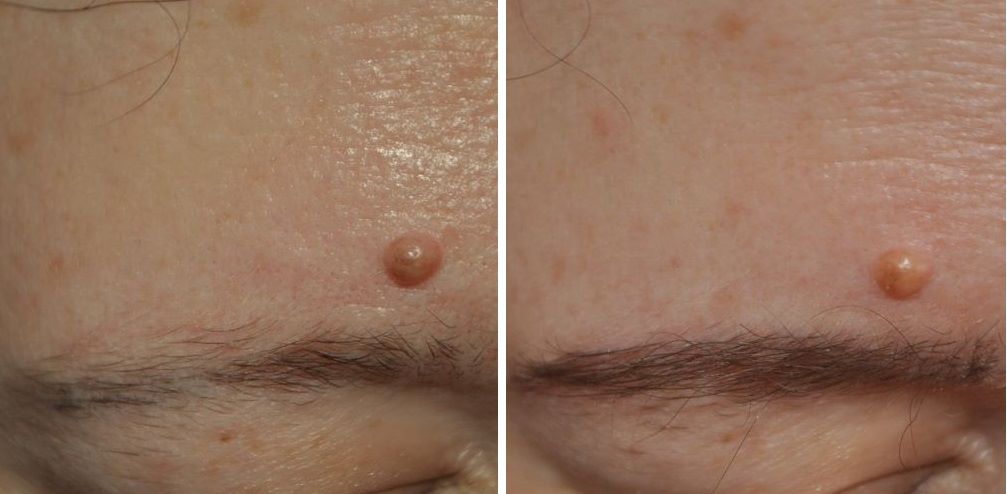
Alternatives to minoxidil for eyebrow growth
- Bimatoprost: This medication was originally designed to reduce pressure inside the eye. However, it was discovered that it may influence hair growth genes, possibly increasing the production of growth factors that improve hair follicle health and blood supply. in a similar way to minoxidil to increase blood flow to your eyebrows, stimulating their growth.
- Corticosteroids: If your eyebrow loss is caused by inflammatory conditions such as alopecia areata or psoriasis, steroid creams or injections can help reduce skin inflammation and decrease symptoms.
- Thyroid treatment: Getting your thyroid condition under control may lead to eyebrow regrowth (though this isn’t always the case).
- Eyebrow transplant: Surgical eyebrow restoration is the only permanent solution to eyebrow hair loss. It involves harvesting healthy hair follicles from your scalp or the other eyebrow (if it is healthy and full) and implanting them into the sparse areas.
- Eyebrow micropigmentation: If eyebrow growth treatments haven’t worked out for you, you can always mask your thinning by getting an eyebrow tattoo or microblading. These procedures produce a realistic effect that can cover any bald or sparse areas on your eyebrows and if well-maintained, they can last for years.
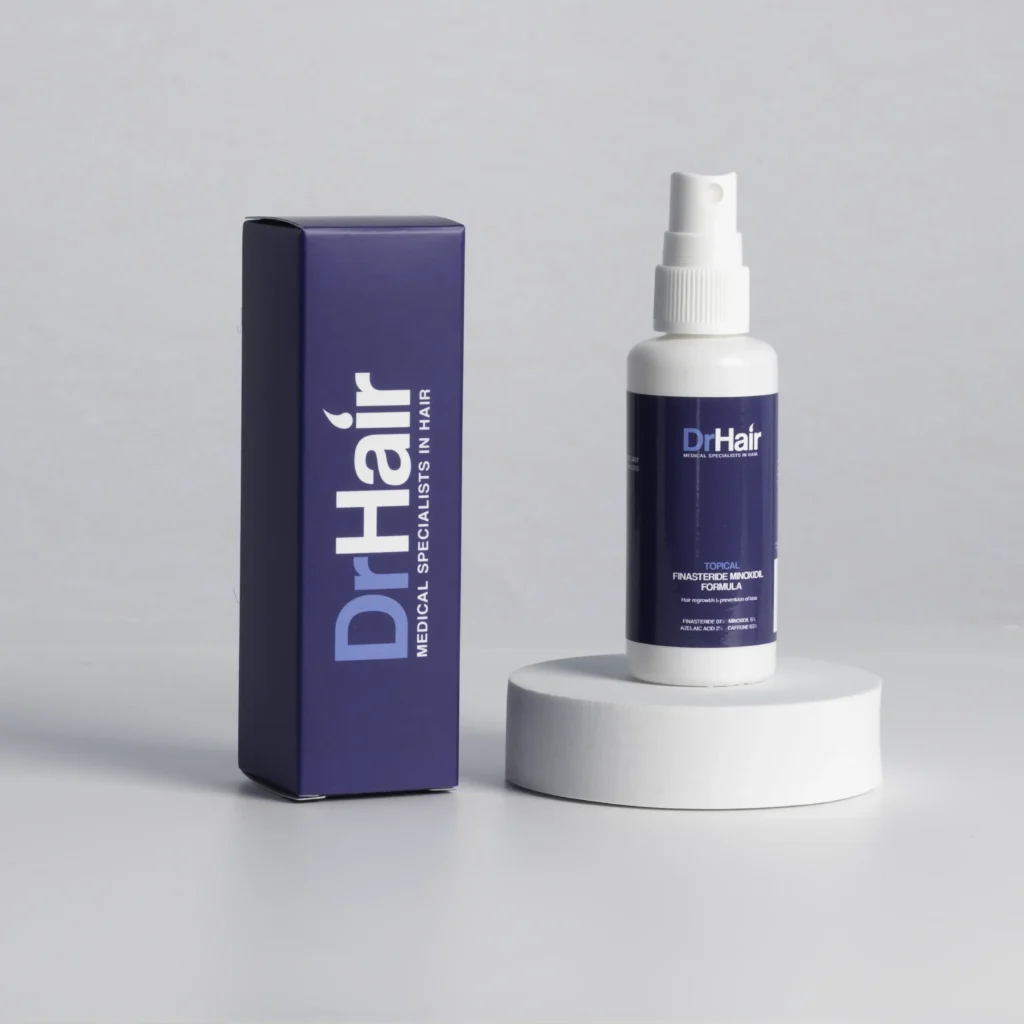
Get the best minoxidil for thinning hair
Some people with sparse eyebrows also experience hair thinning, which may sometimes not subside with the 1-2% minoxidil normally used for eyebrow loss. If this is you, Dr. Hair has the treatment you need. Our proprietary DrHair Minoxidil 5% Formula can help restore your hair fullness and vigour. And by opting for our convenient monthly subscription, you can get safe and effective hair loss products at a significantly discounted price.
We at DrHair understand how important it is for you to start your hair regrowth as soon as possible. That is why our delivery service is always prompt and reliable. And should you have any questions regarding treatment, you’re always welcome to book an online consultation with our knowledgeable, doctor-led support team.
Frequently asked questions
If you would like to know more about what minoxidil can do for your eyebrows, please read the answers to these frequently asked questions.
That largely depends on the reason why your eyebrows thinned out in the first place. If the hair loss was stress-induced or caused by mild overplucking, they will likely grow back in a few months without needing treatment (though minoxidil can support this process).
If your eyebrow loss was caused by an underlying disease, it may reverse on its own after you get treatment for the respective condition (although this doesn’t always happen).
However, if your sparse eyebrows are a result of aging, they will not likely become fuller without hair growth medication.
The hair growth effects of minoxidil only last for as long as you are using the medication. So if you stop treatment, your eyebrow loss may return (unless the underlying issue that was causing it is resolved in the meantime). The only treatment that can ensure permanent eyebrow regrowth is an eyebrow transplant.
No, unfortunately, finasteride doesn’t work for eyebrows. Finasteride works for hair loss by reducing the levels of a male hormone called dihydrotestosterone (DHT), which binds to receptors in your hair follicles, causing male pattern baldness (or female pattern baldness). However, your eyebrows are not affected by this condition. So, while the hair on your scalp can benefit from a finasteride and minoxidil combination, your eyebrows can not.
At this time, minoxidil is not yet FDA or MHRA-approved for eyebrow hair loss (only for scalp alopecia). However, that doesn’t mean it is not effective in making your eyebrows fuller; it only means that more research is needed to prove the extent of its effectiveness.
